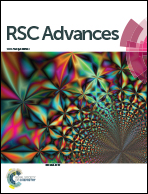Mechanochemical destruction of decabromodiphenyl ether into visible light photocatalyst BiOBr
Abstract
In the present study, mechanochemical (MC) treatment of polybrominated diphenyl ethers (PBDEs), a kind of emerging persistent organic pollutant (POPs), was performed using a high energy ball mill. With Bi2O3 as co-milling reagent, deca-BDE was effectively destroyed and no hazardous intermediates or organic products were observed in the MC reaction. Meanwhile, BiOBr, a promising visible light photocatalyst, was proved to be the final product which could be utilized in further steps. Neither excessive Bi2O3 nor unreacted deca-BDE was left after the reaction as they were originally added at stoichiometric ratio for BiOBr formation. FITR and Raman analyses demonstrate the collapse of deca-BDE skeleton and the cleavage of C–Br bonds with the generation of inorganic carbon, revealing the mechanism of carbonization and debromination. The gaseous products at different reaction atmosphere were also analyzed, showing that mostly CO2 with a fraction of CO were released during the MC process. The reaction formula of deca-BDE and Bi2O3 was then proposed based on the identified final products. Besides, the photocatalytic activity of the generated BiOBr was evaluated using methyl orange as the model pollutant. A good degradation performance from BiOBr was achieved under both simulated sunlight and visible light irradiation, indicating the possibility for its further utilization.


 Please wait while we load your content...
Please wait while we load your content...